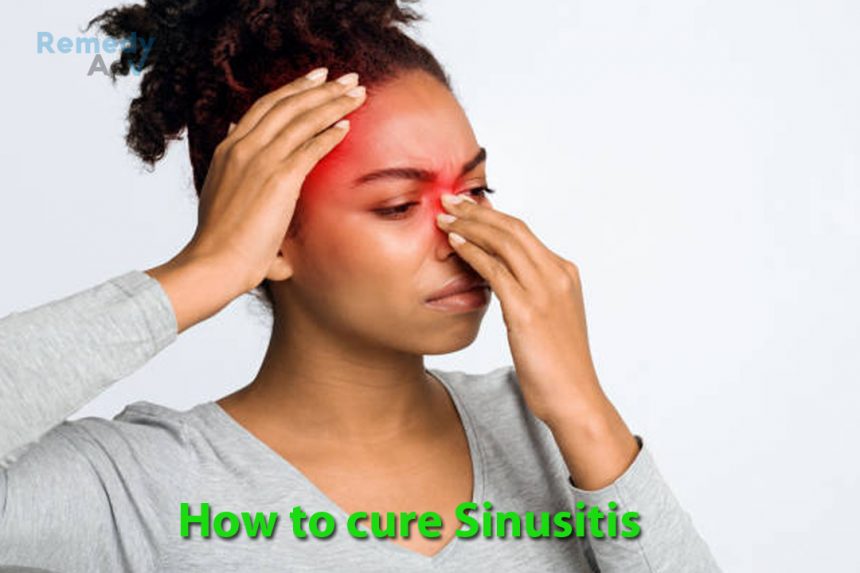In case you are suffering from stuffy nose for a week or two, you may not be suffering from a cold but from sinusitis. That’s an infection or inflammation of the sinuses, the hollow parts in the bones closer to the nose.
Among other functions, the four groups of sinuses warm and humidify air on its way to lungs from nostrils. A lining of mucus keeps the sinuses moist.
When everything’s working right, tiny hairs called cilia sweep mucus from the sinuses down into the nose. But when the paths joining nose and sinuses are blocked during a cold or allergy attack sinuses are unable to drain. Fungi and Bacteria grow rapidly in the blocked mucus, resulting infection.
Sinusitis may result in stubborn bronchitis or cough and may worsen asthma. In uncommon cases, it may also result in a life threatening infection of the eyes and brain.
SYMPTOMS AND CAUSES
Sinusitis is usually noticeable by severe congestion, mild fever, and headache, discomfort in the teeth or face and a dense yellowish nasal discharge that flows continuously. Some sinusitis sufferers are sensitive to shifts in barometric pressure for example, on plane flights or during changes in the weather.
The common cold, in contrast, is characterized by watery white or yellow mucus that clears up as the day goes on. Allergies are often accompanied by itching and watering eyes.
Most cases of sinusitis occur during or shortly after a cold. Other cases are caused by allergies tobacco smoke or other respiratory irritants, mouth infections, or anatomical problems, such as nasal polyps or a deviated septum, that obstruct sinus drainage.
Forty percent of cold-related sinus attacks get better without treatment as sinuses begin to drain again. But sinusitis often becomes chronic, creating long-term changes in the delicate lining of the sinus (the mucosa).
Chronic sinusitis may damage the cilia or acidify the mucus, leading to further irritation and inflammation. Over time, repeated bouts of sinusitis can permanently narrow the opening of the sinuses into the nose.
Treating acute sinusitis
The standard treatment for acute sinusitis is a course of antibiotics lasting 10 to 14 days plus oral decongestants and nasal spray. Antihistamines are not recommended because they can be too drying.
Caution: Using over-the-counter decongestant nasal sprays for more than five days can produce a “rebound” effect, in which the sprays themselves cause the nose to clog up.
With antibiotics, it’s important to take the full course even after you start feeling better. Otherwise, you create prime breeding conditions for drug-resistant bacteria.
Another good treatment for acute sinusitis is saline irrigation. When done under a doctor’s supervision, it can be highly effective at reducing nasal and sinus congestion.
What to do:
Each morning, fill a clean, narrow-tipped plastic squeeze bottle with a mixture comprised of one teaspoon salt to one pint lukewarm water. As you lean over a sink, squirt the solution into your nose until it’s all gone. The solution will drain out. Be sure to clean the container and tip after each use.
Treating chronic sinusitis
Chronic sinusitis is harder to treat. In addition to decongestant sprays and pills, a three week course of antibiotics is often helpful. If there’s still no improvement at that point, see an allergist or otolaryngologist.
To pinpoint the source of your sinus trouble, this doctor may recommend an X ray or CT scan.. .or performs endoscopy.
Via this simple procedure done in the doctor’s office the doctor can determine whether you have nasal polyps or another anatomical obstruction. If so, surgery to remove polyps or to widen the sinus opening slightly may be helpful.
If your sinusitis is diagnosed as allergy related, it may be necessary to avoid dust, animal dander and other allergens.
Nasal medications such as steroid inhalers may also provide some relief
If you’ve had sinus trouble in the past and want to avoid recurrence, take precautions whenever you have a cold to keep it from turning into a sinus attack.
Use decongestants and nasal irrigation and avoid flying, scuba diving and other activities that involve rapid changes in air pressure.







